Designing a Balance Between Safety & Child Development
In the playground industry, we hear it all the time from the adults: “When I was a kid, we played on hot, rickety metal playground equipment, suspended over a 20-foot drop—over pavement—and we survived. Kids today have it too easy.”
The case for playground safety sometimes appears to fall on deaf ears. The often tedious work of age-appropriate design and other safety measures can come across as just plain overly cautious.
But it’s more than the prevention of a few scrapes and bruises. Take the example of a 5-year-old girl who recently died after what should have been an afternoon of fun at the playground. You can imagine that the loved ones of that little girl want to know why their misfortune wasn’t prevented. The child died after sliding down a slide, landing on surfacing that didn’t meet safety recommendations and then struck her head on the base of the slide, killing her.
It’s tragic since injuries like this one are completely preventable, in that case by having the proper surfacing at the base of the slide.
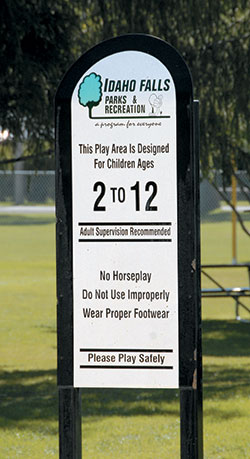
Although nothing can replace the guidance and supervision of a responsible adult, proper age group signage is a key recommendation for designing play equipment for a specific age group of children.

The CPSC said children ages 0-4 are most likely to be injured on a climber (40 percent) or slide (35 percent). Being sensitive to children’s differing abilities and play needs is advisable for playtime to be fun and safe.
“There’s no reason for children to be injured badly on play equipment in this day and age,” Donna Thompson, executive director of the National Program for Playground Safety (NPPS), said.
The Centers for Disease Control states that each year, 200,000 kids younger than 14 years are treated in emergency rooms from playground-related injuries. Age-appropriate design is a big factor in keeping injuries to a minimum. But it is also paramount, experts say, to keep perspective on the “whole child” and on child development in considering playground design for youngsters.
If the Shoe Fits?
After visiting more than 3,000 schools, parks and daycares across the country, NPPS graded the United States on its safety standards in regard to playgrounds, with age-appropriate design as one of four primary categories.
Overall, the nation got a C+ (potentially hazardous to kids) in 2004 for its Age-Appropriate Design, the score being dragged down by Fs in the signage for age groups and separate areas categories. The country did better on guardrails and preventing climbing on unsafe portions of the structures, getting an A- and B- respectively. That overall C+ was an improvement on the grade from four years prior, so there is progress.
But there’s still work to be done.
In addition to the typical safety standards, playground designers should make a concerted effort to pay attention to age-appropriate design, chiefly when it comes to designating equipment for different age groups. Since the differences in development between a 5-year-old and a 10-year-old are so vast, the equipment kids play on needs to reflect that. Thompson likens a 5-year-old playing on equipment intended for a 12-year-old to wearing shoes seven sizes too big. “You wouldn’t give a 5-year-old shoes intended for a 12-year-old,” she said. (See more from NPPS on selecting age-appropriate playground equipment.)
But keeping a balance between what is best for a child in terms of safety and what is best for a child in terms of development and creativity can be a delicate task for playground designers.
“Chronological age is only a rough indicator of children’s play needs,” Joe L. Frost, Ed.D, L.H.D., Parker Centennial Professor Emeritus, University of Texas, said. “Developmental levels, the cognitive, social and physical skills learned are better indicators. The one great truism in child development is the existence of individual differences among children of similar or same chronological ages.”
Frost said that adults who interact with children at play must be skilled observers of children, sensitive to their changing abilities and their present play needs. While age may be the best indicator for separating equipment according to safety guidelines, development and awareness of what an individual child’s play abilities are also key indicators of what is best for each child.
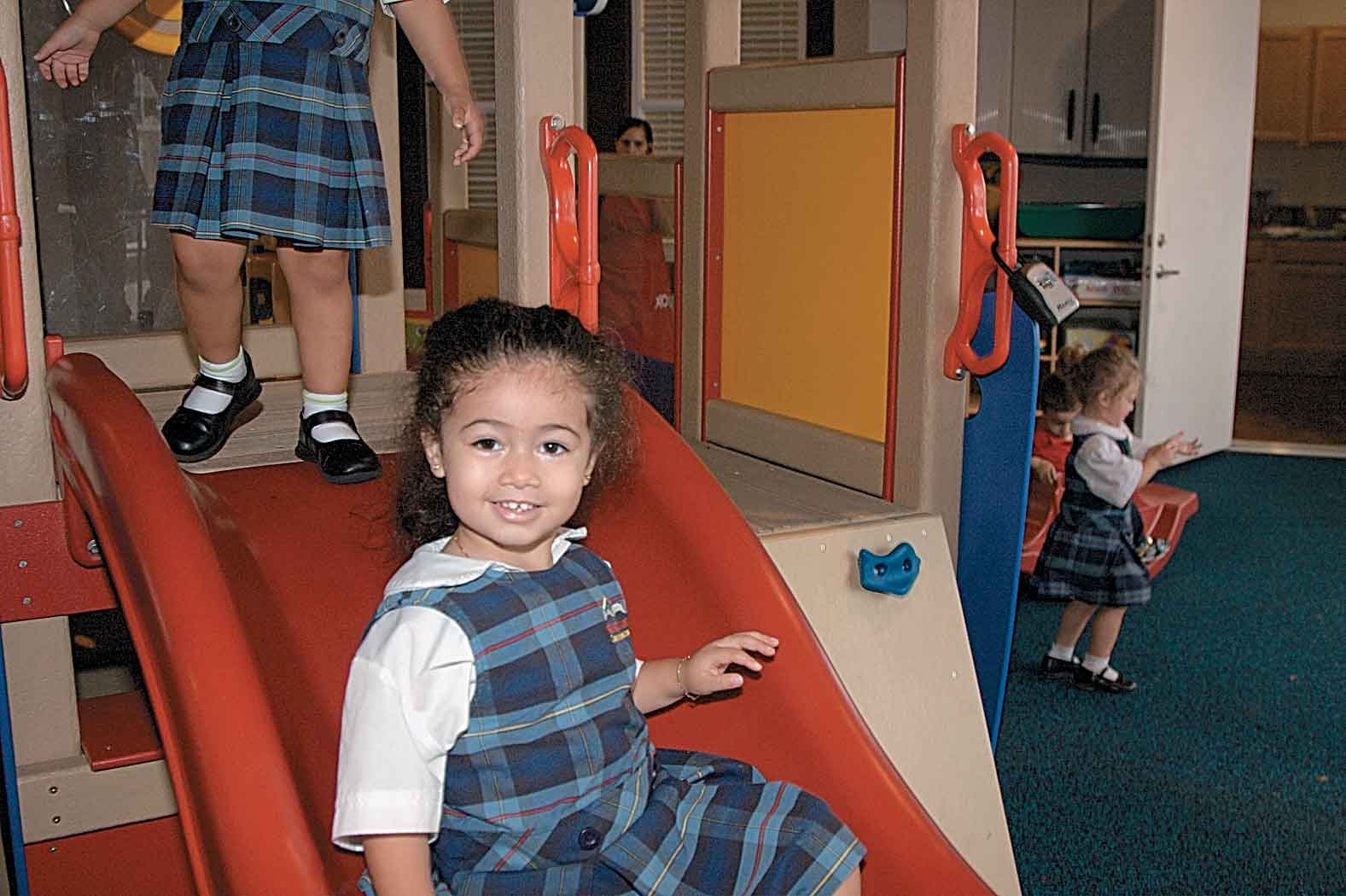
Kids who are given play opportunities on the proper equipment are kept happy and safe. This photo, courtesy of PlayMart, was taken at Freedomland Christian Academy, in Kissimmee, FL.
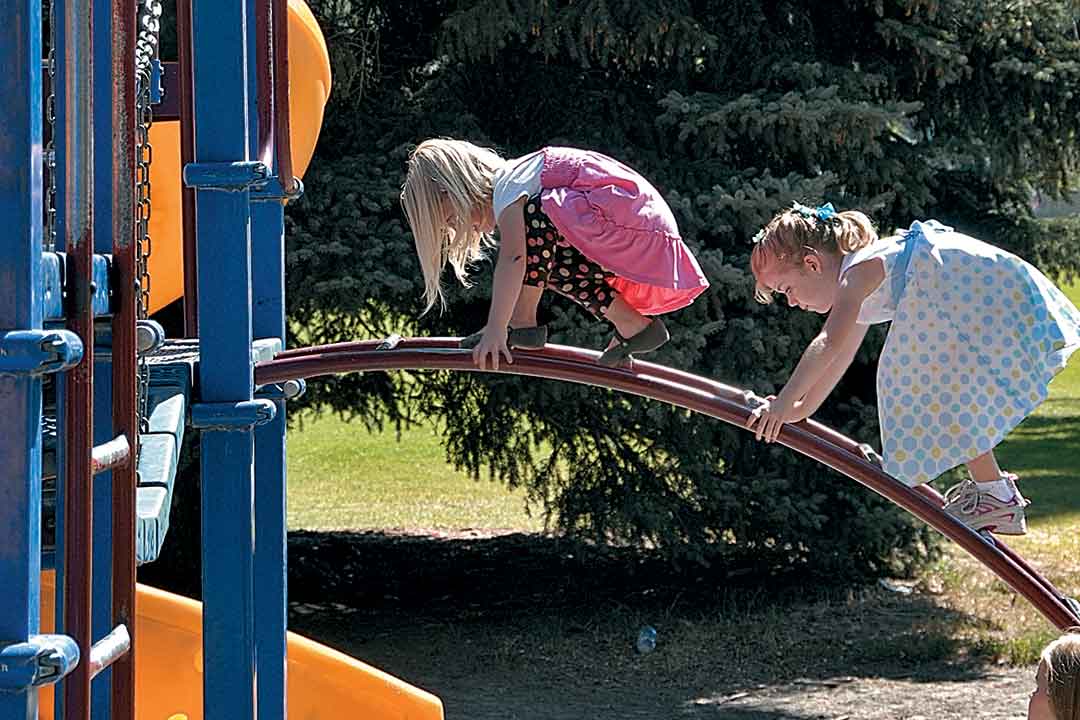
Not every piece of equipment needs to be scaled down for the youngest kids. Having equipment that will challenge older or more advanced kids is best to help all children meet their developmental potential.
“The adult assists by ensuring that children have access to natural and built play environments that provide challenges consistent with the child’s present play needs,” Frost said. “For example, some preschool children have poorly developed physical skills, and others can function safely and effectively in play environments typically prescribed for older children. The wise leader or playworker is in the best position to make decisions about levels of challenge and forms of play needed for a particular group of children.”
In promoting safety education to help prevent injuries to kids on playground equipment, Thompson argued that the current standard of preschool and grade school divisions for playground equipment needs to be further divided up into smaller categories: toddler ages 6-23-months, preschool ages 2-5, K-1st grades, 2-3rd grades and 4-6th grade age divisions. “Despite different abilities, age seems to be the best way to designate use for playground equipment,” Thompson said.
There are also a host of benefits to age-appropriate design in addition to safety. There’s the chance for kids to interact with their same-age peers, developing needed social skills. There’s a range of gross and fine motor skills that equipment for specific age groups helps kids develop. Not to mention the kid fun vs. frustration factor. The little guys who attempt to play on equipment that is too big or complex for them can either get hurt or discouraged that they can’t play, too.
But child development experts warn of overly structured guidelines stifling the development of children.
“Observe children extensively to determine how to create playgrounds that reflect the broad developmental needs of children and great environments that are flexible and subject to change by the children and their play leaders,” said Frost. “Integrating natural materials and built materials help ensure that children themselves can be a part of the creative process. Presently, the most used guidelines are relatively fixed and standardized, leaving limited room for creativity and user modification. Fear of litigation exerts a hard and heavy hand on the playability of playgrounds, resulting in ‘guidelines’ being interpreted as mandatory.”
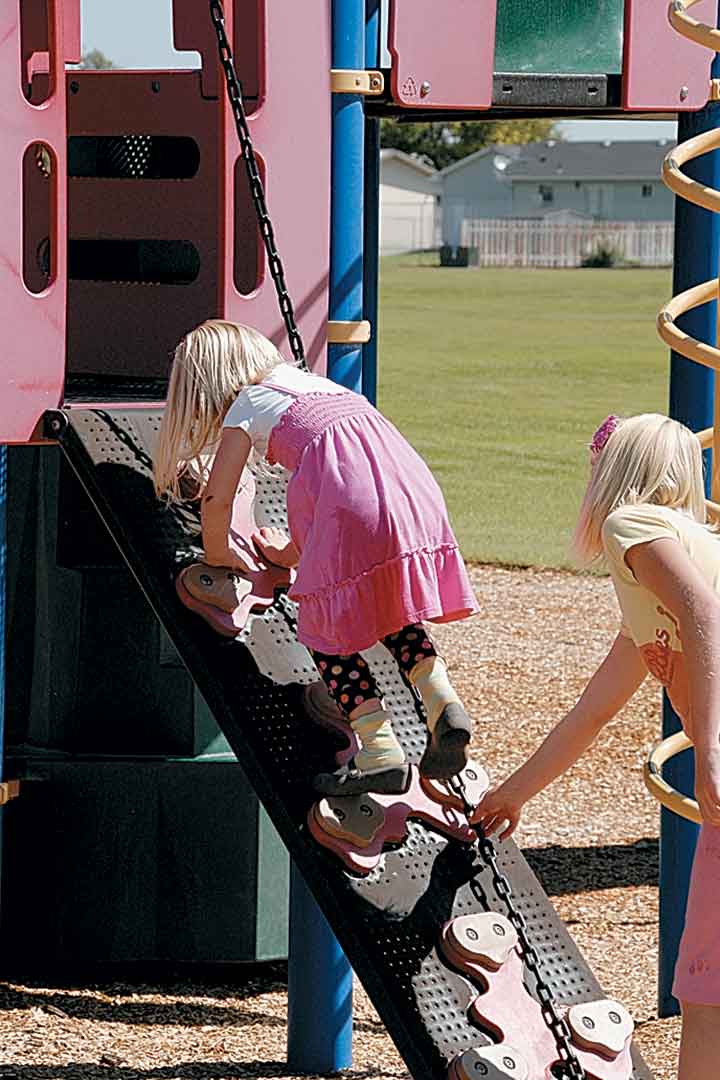
Experts recommend paying attention to differing abilities and providing play opportunities specific to each child’s needs. What may be the perfect feat for one child won’t be a challenge for another.
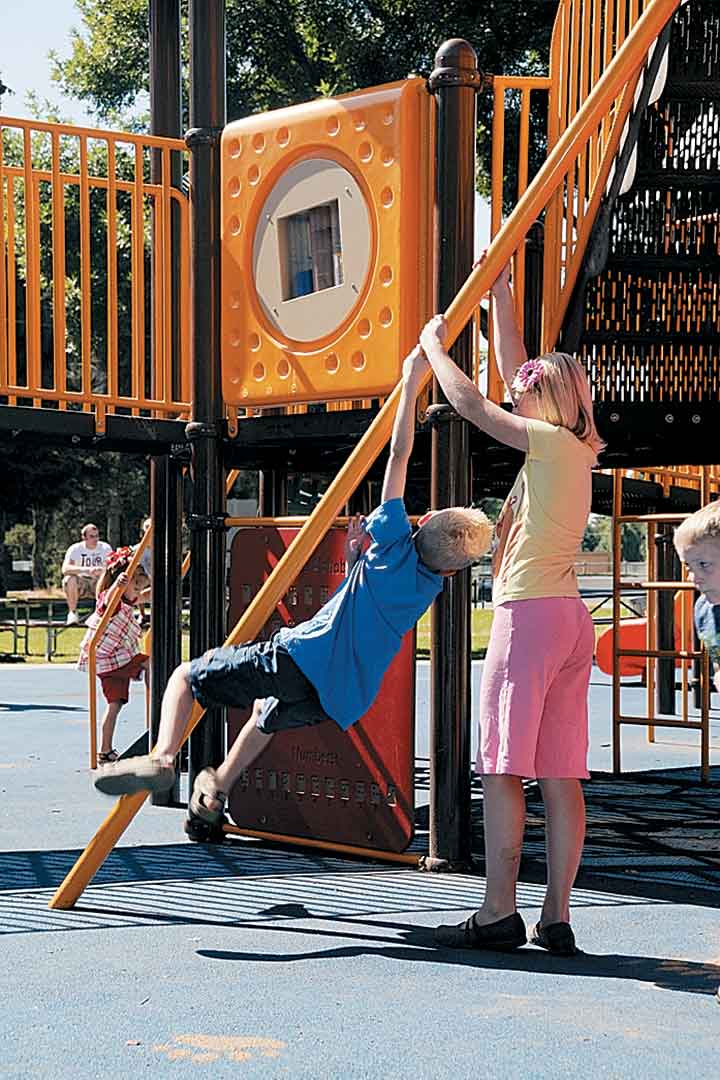
It’s no secret that boys love to climb. Wisely manufactured playground equipment that meets age appropriate guidelines will do a good job of keeping little climbers occupied with challenging climbing elements. This prevents kids from posing risks to themselves by traversing, say the roof over a slide, in an effort to get a bit more action.
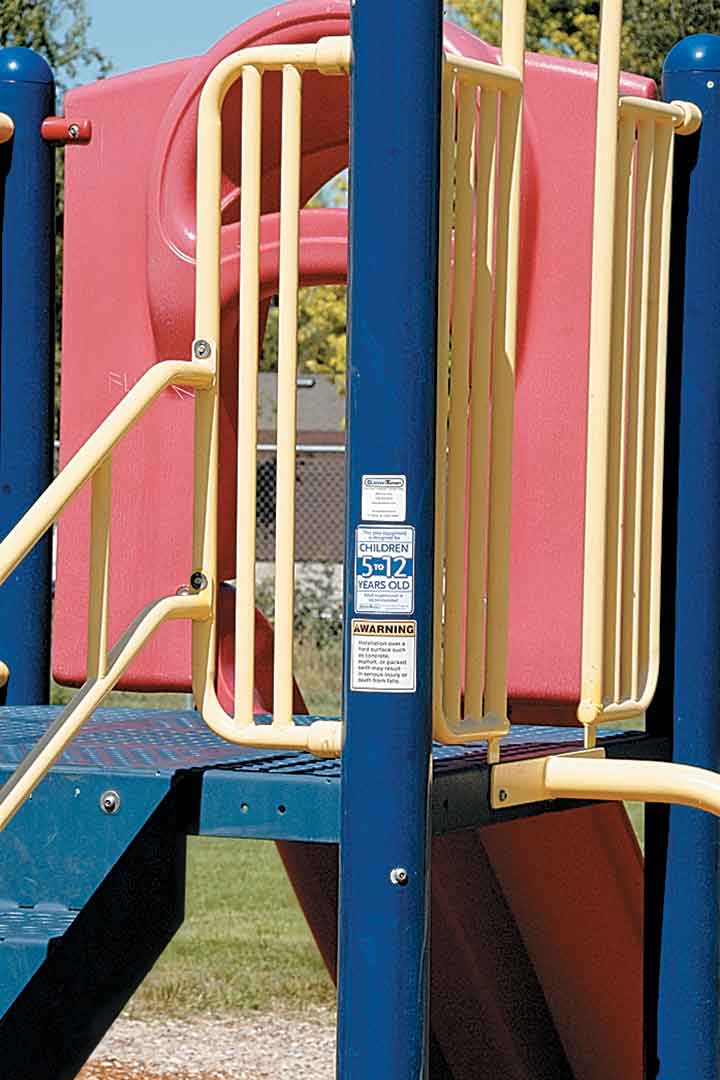
According to NPPS director Donna Thompson, with responsible adult supervision, proper equipment and surfacing maintenance, and proper signage for the age groups, most injuries to kids can be prevented.
Desired Developments
Thompson recommends teaching kids to play in areas specified just for their age groups and teaching kids a safer way to fall as well as the correct way to use playground equipment, which she says doesn’t often happen. She expressed concern that some playgrounds, perhaps due to financial reasons, negligence or poor maintenance, just don’t meet age-appropriate recommendations. But designers need to consider child development aspects in addition to safety concerns.
As Frost said, “The discipline of child development focuses on individual differences and providing play experiences consistent with the needs of individual children. Children learn from one another across age levels and adults ‘scaffold’ children’s learning experiences by providing increasingly challenging materials and opportunities for rich, active, ‘skinned knee’ and ‘blistered hands’ play. Placing rigid upper limits on the complexity of play or the challenge of play and play environments for children of a specific chronological age works only as a general guideline for some children and fails to allow for the needs of faster or delayed learners or for learning from more experienced peers.”
As the playground industry works through its various issues and differing schools of thought in regard to age-appropriate design, safety guidelines and developmental play, today’s kids will happily continue to play on playgrounds provided by adults.
The overall goal of safety and rich developmental play during childhood will continue to progress past the days of rickety equipment suspended 20 feet above the blacktop, at which point will this generation be the ones to say: “Today’s kids have it too easy.”
AGE-APPROPRIATE DESIGN
- Playgrounds have separate areas for ages 2-5 and 5-12
- Platforms have appropriate guardrails
- Platforms allow change of directions to get on/off structure
- Signage indicating age group for equipment provided
- Equipment design prevents climbing outside the structure
- Supporting structure prevents climbing on it
Source: NPPS

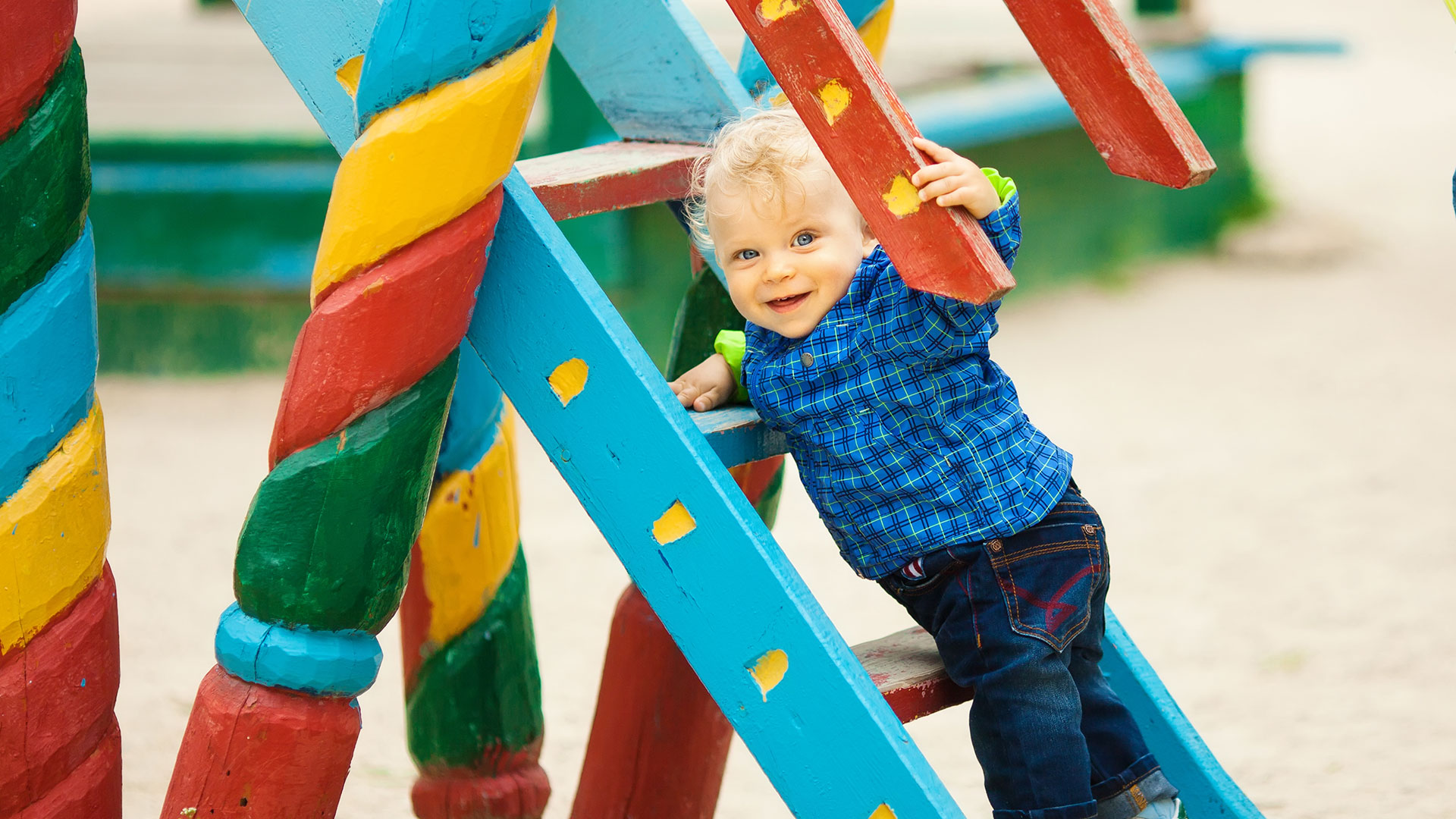
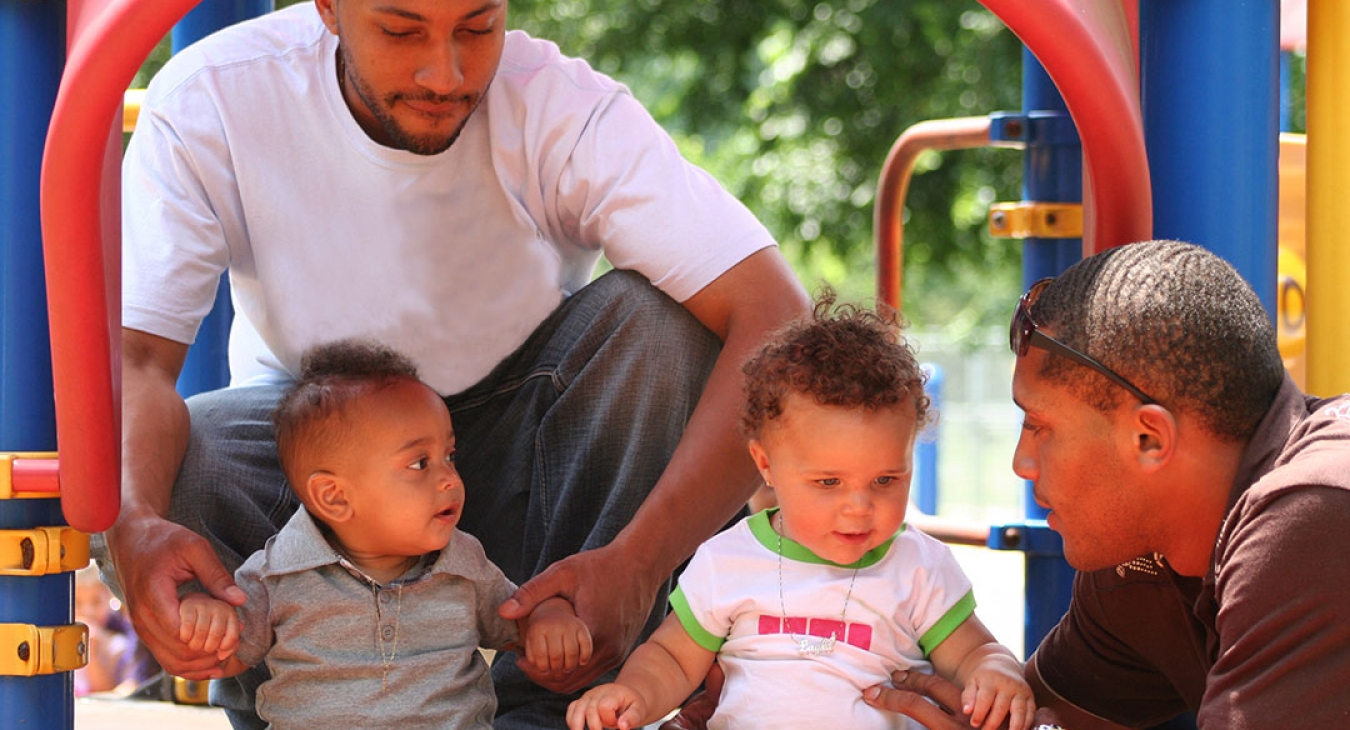
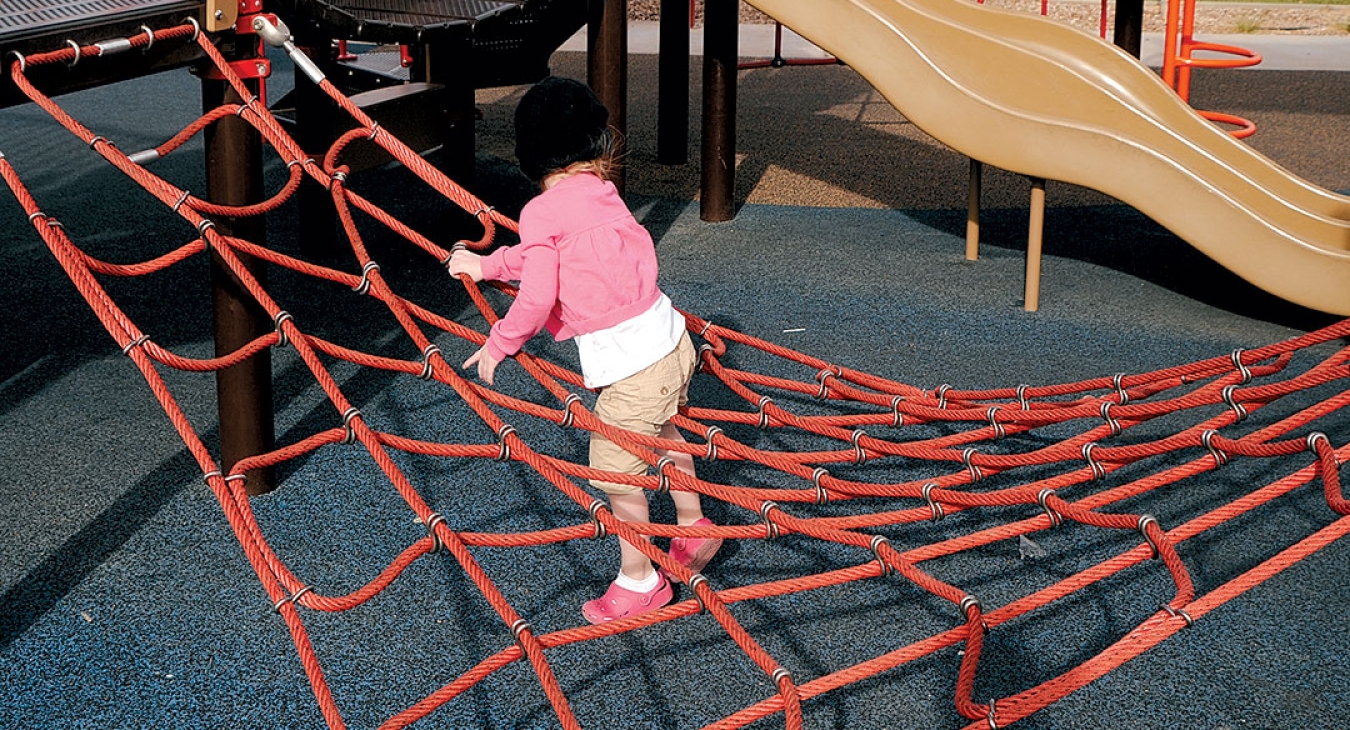
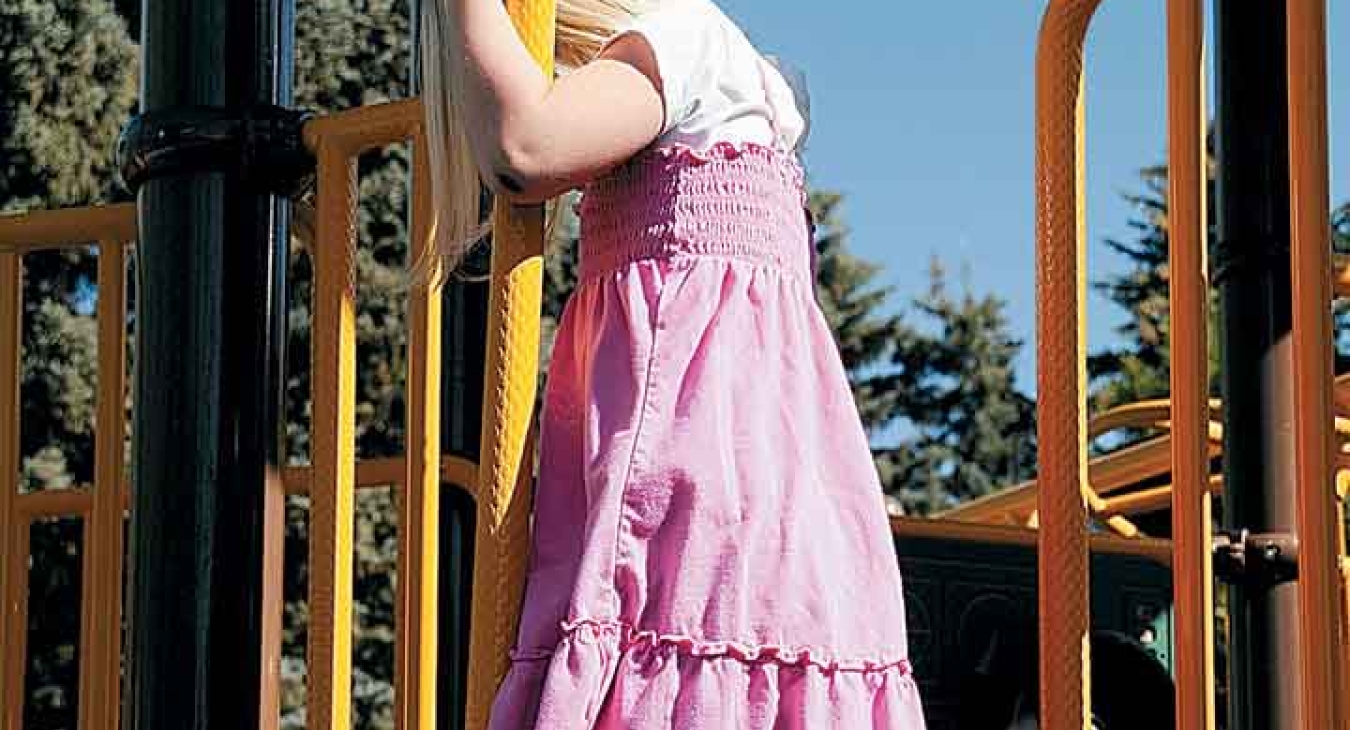
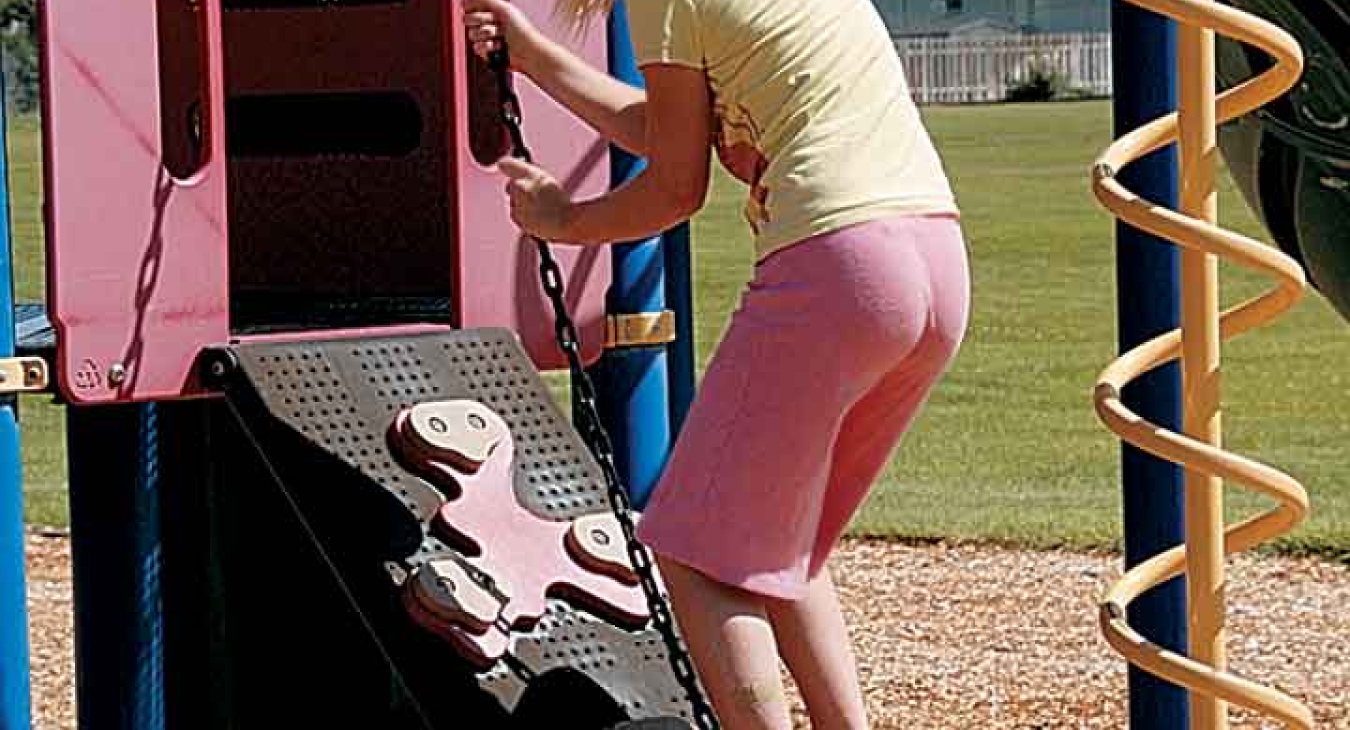
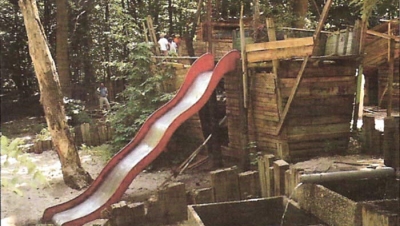
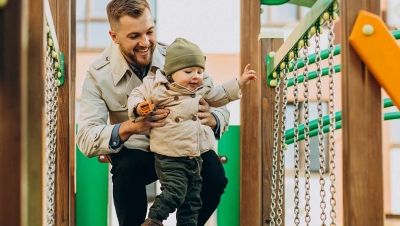
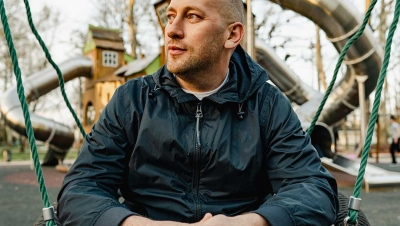







Add new comment